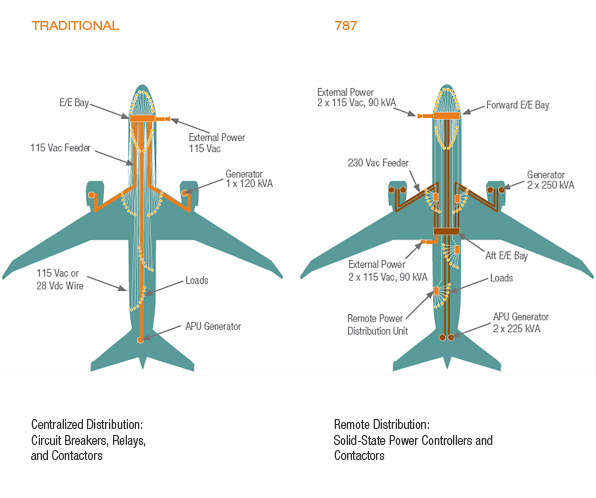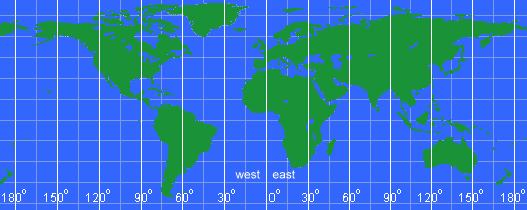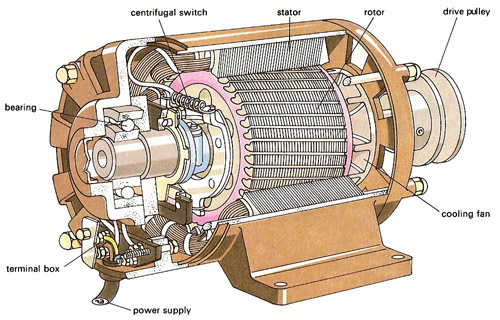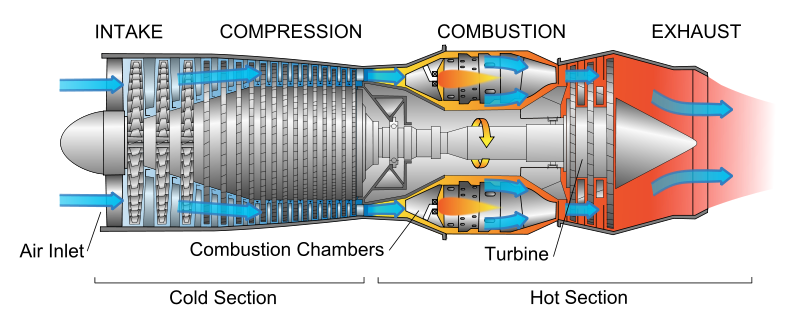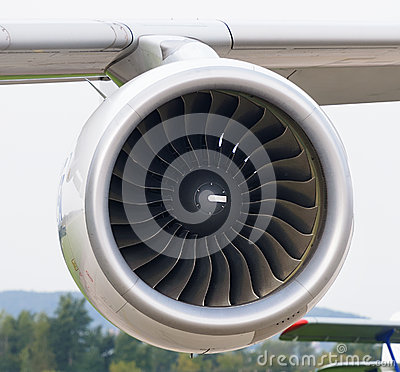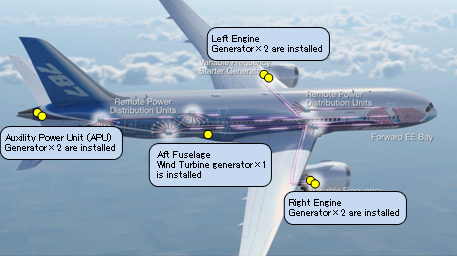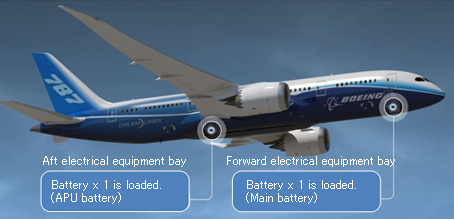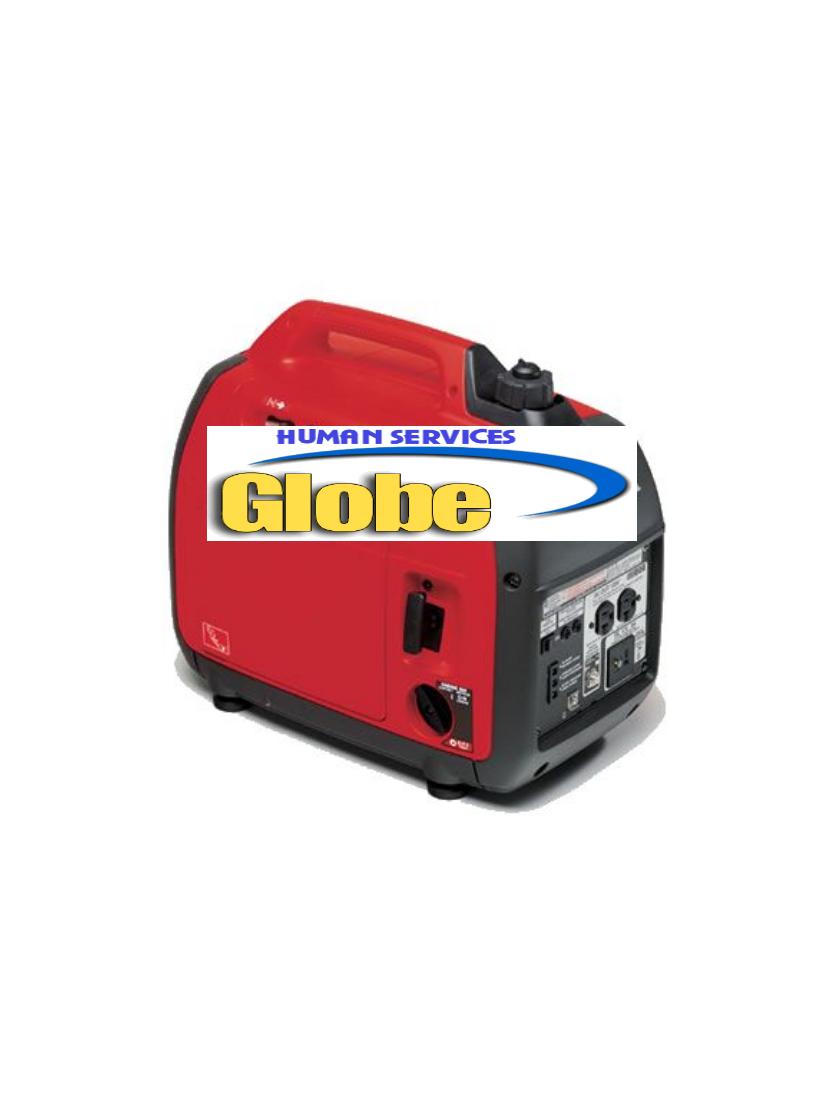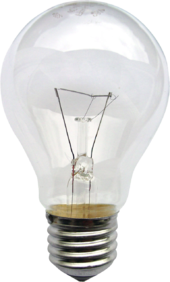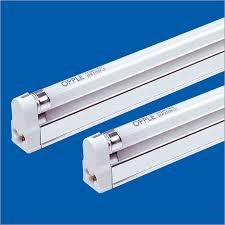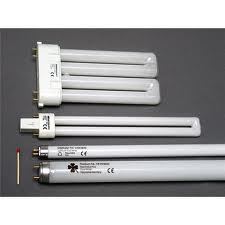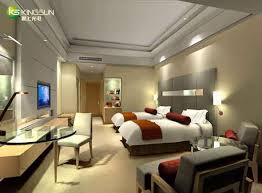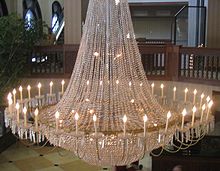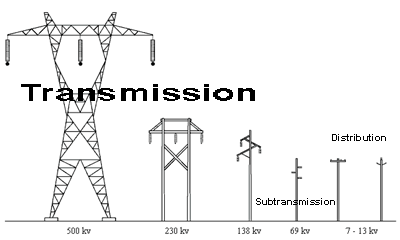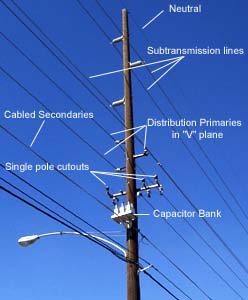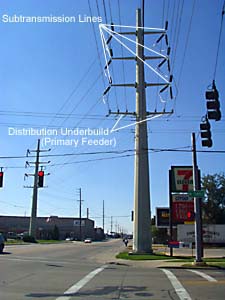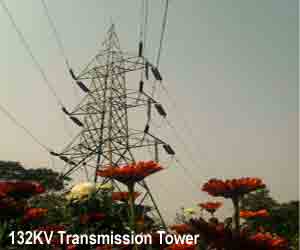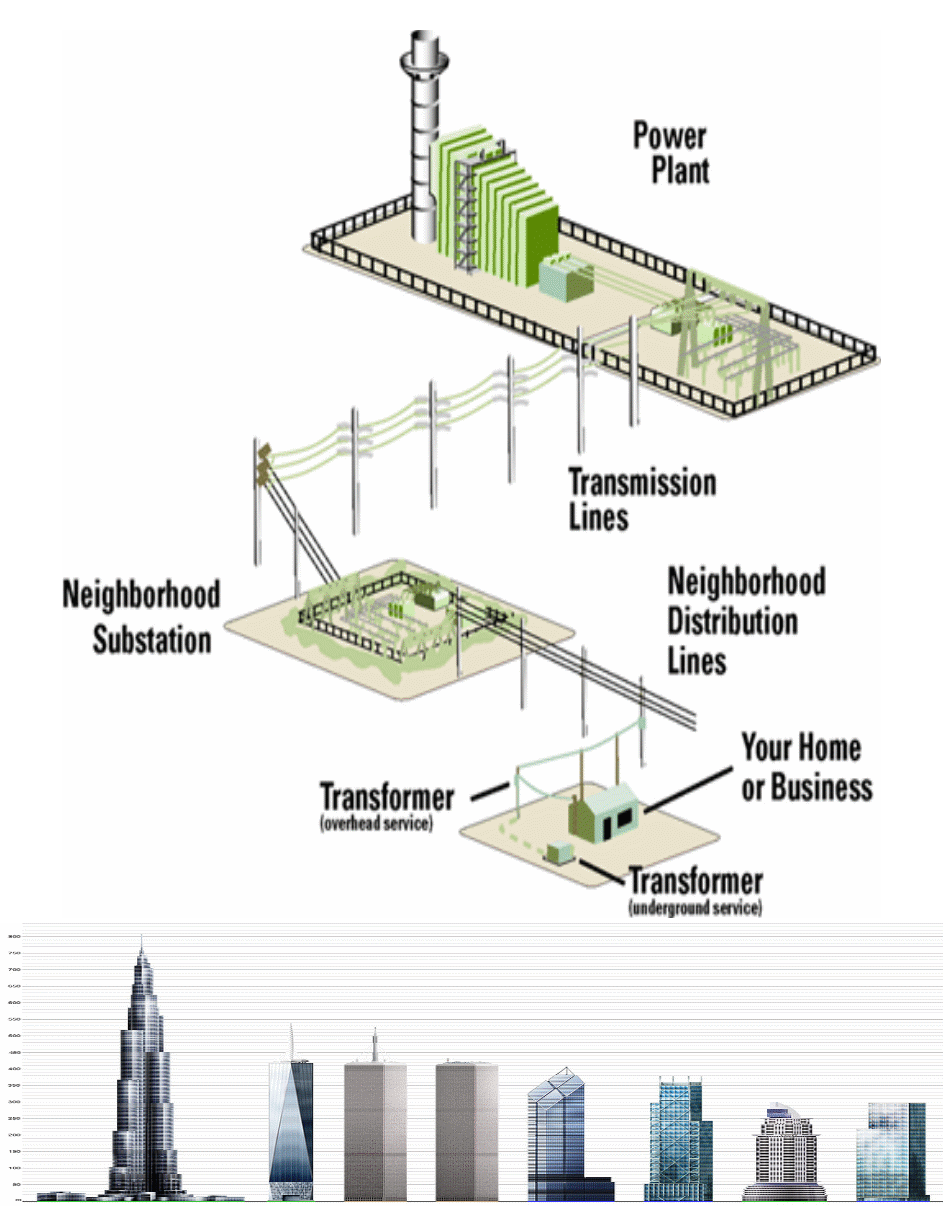What is this job like?
A global positioning system that can pinpoint a car's location. Giant generators that can power entire cities. A new design for an airplane's electrical system. Electrical and electronics engineers work on high-tech projects like these.
Electrical engineers design new and better electronics. They also test equipment and solve problems. A project starts by deciding what the new electronics will do. Then, the engineer designs the circuits and other parts of the electronics. Engineers might draw their designs using a computer.
Later, the engineers test their designs and make them better. Many projects don't work at first. The engineers have to figure out why and then fix them.
Electrical engineers work on many kinds of products. They might work on cars, robots, cell phone systems, the lighting and wiring in buildings, and radar and navigation systems, for example.
Engineers work in offices, labs, or industrial plants. Many work a normal 40-hour week. At times, they work longer to meet deadlines.
How do you get ready?
You need a college degree in engineering for almost all engineering jobs.
Getting into engineering school takes good grades in math and science. Students also need courses in English, social studies, and computers.
Engineers should be creative, curious, logical, and detail-oriented. They should also be able to work as part of a team.
How much does this job pay?
The middle half of electrical engineers earned between $60,640 and $94,050 in 2006. The lowest-paid 10 percent earned less than $49,120. The highest-paid 10 percent earned more than $115,240.
The middle half of electronics engineers earned between $64,440 and $99,630. The lowest-paid 10 percent earned less than $52,050. The highest-paid 10 percent earned more than $119,900.
How many jobs are there?
There were about 291,000 electrical and electronics engineers in 2006. Many worked for companies that make medical machines, communications equipment, or electronics.
What about the future?
Electrical engineers should have good job prospects. Jobs for electrical engineers are expected to grow more slowly than the average for all occupations through 2016. There will be a need for more electronic devices like giant electric power generators and wireless phone transmitters.
Are there other jobs like this?
Aerospace engineers
Civil engineers
Computer hardware engineers
Industrial engineers
Mechanical engineers
Where can you find more information?
What is the curriculum?
English
Electricity
What is electricity?
How is electricity produced?
How is electricity produced in a circuit?
How is electricity generated and distributed?
Electricity generation
Electricity generation is the process of generating electricity from other forms of energy.
For electric utilities, it is the first process in the delivery of electricity to consumers. The other processes, electricity transmission, distribution, and electrical power storage and recovery using pumped storage methods are normally carried out by the electrical power industry.
Electricity is most often generated at a power station by electromechanical generators, primarily driven by heat engines fueled by chemical combustion or nuclear fission but also by other means such as the kinetic energy of flowing water and wind. There are many other technologies that can be and are used to generate electricity such as solar photovoltaics and geothermal power.
Turbines
All turbines are driven by a fluid acting as an intermediate energy carrier. Many of the heat engines just mentioned are turbines. Other types of turbines can be driven by wind or falling water.
A global positioning system that can pinpoint a car's location.
Giant generators that can power entire cities.
A new design for an airplane's electrical system.
Etc.
What is the difference between a generator and a transformer?
What are the various types of generators?
Generator and turbine: Is there a difference?
What are the different types of turbines?
What are the various capacities of transformers?
How many total generators are there?
How many total transformers are there?
What is the capacity?
How much load can they bear?
Who are the manufacturers?
What is their mailing address?
What is the location of a repair facility?
What are the minimum requirements to build a dam?
How is a dam built?
How long will it take to build a dam?
What are different types of turbines?
What is a hydroelectric turbine?
How much space is required to install a hydroelectric turbine?
What are the most important components of a hydroelectric turbine?
What type of hydroelectric turbine is required for the proposed dam?
What is the location of the proposed dam?
How is it constructed?
What is the maximum capacity available in the world?
Where is it?
What is the maximum capacity available in this region?
What are the most important components of a generator?
What are the most important components of a transformer?
How is each component manufactured?
What materials are used to manufacture each component?
What is the difference between a grid station and a receiving station?
1. What is a stage in a steam turbine?
Answer:
In an impulse turbine, the stage is a set of moving blades behind the nozzle. In a reaction turbine, each row of blades is called a "stage." A single Curtis stage may consist of two or more rows of moving blades.
2. What is a diaphragm?
Answer:
Partitions between pressure stages in a turbine's casing are called diaphragms. They hold the vane-shaped nozzles and seals between the stages. Usually labyrinth-type seals are used. One-half of the diaphragm is fitted into the top of the casing, the other half into the bottom.
3. What is a radial-flow turbine?
Answer:
In a radial-flow turbine, steam flows outward from the shaft to the casing. The unit is usually a reaction unit, having both fixed and moving blades. They are used for special jobs and are more common to European manufacturers, such as Sta-Laval (now ABB).
4. What are four types of turbine seals?
Answers:
1. Carbon rings fitted in segments around the shaft and held together by garter or retainer springs.
2. Labyrinth mated with shaft serration’s or shaft seal strips.
3. Water seals where a shaft runner acts as a pump to create a ring of water around the shaft. Use only treated water to avoid shaft pitting.
4. Stuffing box using woven or soft packing rings that are compressed with a gland to prevent leakage along the shaft.
5. In which turbine is tip leakage a problem?
Answer:
Tip leakage is a problem in reaction turbines. Here, each vane forms a nozzle; steam must flow through the moving nozzle to the fixed nozzle. Steam escaping across the tips of the blades represents a loss of work. Therefore, tip seals are used prevent this.
6. What are two types of clearance in a turbine?
Answer:
1. Radial
2. - clearance at the tips of the rotor and casing.
Axial
- the fore-and-aft clearance, at the sides of the rotor and the casing.
What are four types of thrust hearings?
7.
Answer:
1. Babbitt-faced collar bearings.
2. Tilting pivotal pads.
3. Tapered land bearings.
4. Rolling-contact (roller or ball) bearings.
8. What is the function of a thrust bearing?
Answer:
Thrust bearings keep the rotor in its correct axial position.
9. What is a balance piston?
Answer:
Reaction turbines have axial thrust because pressure on the entering side is greater than pressure on the leaving side of each stage. To counteract this force, steam is admitted to a dummy (balance) piston chamber at the low-pressure end of the rotor. Some designers also use a balance piston on impulse turbines that have a high thrust. Instead of piston, seal strips are also used to duplicate a piston's counter force.
10. Why should a steam or moisture separator be installed in the steam line next to a steam turbine?
Answer:
All multistage turbines, low-pressure turbines, and turbines operating at high pressure with saturated steam should have a moisture separator in order to prevent rapid blade wear from water erosion.
11. What are some conditions that may prevent a turbine from developing full power?
Answers:
1. The machine is overloaded.
2. The initial steam pressure and temperature are not up to design conditions.
3. The exhaust pressure is too high.
4. The governor is set too low.
5. The steam strainer is clogged.
6. Turbine nozzles are clogged with deposits.
7. Internal wear on nozzles and blades.
12. Why is it necessary to open casing drains and drains on the steam line going to the turbine when a turbine is to be started?
Answers:
To avoid slugging nozzles and blades inside the turbine with condensate on start-up; this can break these components from impact. The blades were designed to handle steam, not water.
13. What is steam rate as applied to turbo-generators?
Answer:
The steam rate is the pounds of steam that must be supplied per kilowatt-hour of generator output at the steam turbine inlet.
14. What are the two basic types of steam turbines?
Answers:
1. Impulse type.
2. Reaction type.
15. What is the operating principle of an impulse turbine?
Answer:
The basic idea of an impulse turbine is that a jet of steam from a fixed nozzle pushes against the rotor blades and impels them forward. The velocity of the steam is about twice as fast as the velocity of the blades. Only turbines utilizing fixed nozzles are classified as impulse turbines.
16. What is the operating principle of a reaction turbine?
Answer:
A reaction turbine utilizes a jet of steam that flows from a nozzle on the rotor. Actually, the steam is directed into the moving blades by fixed blades designed to expand the steam. The result is a small increase in velocity over that of the moving blades. These blades form a wall of moving nozzles that further expand the steam. The steam flow is partially reversed by the moving blades, producing a reaction on the blades. Since the pressure drop is small across each row of nozzles (blades), the speed is comparatively low. Therefore, more rows of moving blades are needed than in an impulse turbine.
17. What are topping and superposed turbines?
Answer:
Topping and superposed turbines arc high-pressure, non-condensing units that can be added to an older, moderate-pressure plant. Topping turbines receive high-pressure steam from new high-pressure boilers. The exhaust steam of the new turbine has the same pressure as the old boilers and is used to supply the old turbines.
18. What is an extraction turbine?
Answer:
In an extraction turbine, steam is withdrawn from one or more stages, at one or more pressures, for heating, plant process, or feedwater heater needs. They are often called "bleeder turbines."
19. What is a combination thrust and radial bearing?
Answer:
This unit has the ends of the babbitt bearing extended radially over the end of the shell. Collars on the rotor face these thrust pads, and the journal is supported in the bearing between the thrust collars.
20. What is a tapered-land thrust bearing?
Answer:
The babbitt face of a tapered-land thrust bearing has a series of fixed pads divided by radial slots. The leading edge of each sector is tapered, allowing an oil wedge to build up and carry the thrust between the collar and pad.
21. What is important to remember about radial bearings?
Answer:
A turbine rotor is supported by two radial bearings, one on each end of the steam cylinder. These bearings must be accurately aligned to maintain the close clearance between the shaft and the shaft seals, and between the rotor and the casing. If excessive bearing wear lowers the he rotor, great harm can be done to the turbine.
22. How many governors are needed for safe turbine operation? Why?
Answer:
Two independent governors are needed for safe turbine operation. One is an overspeed or emergency trip that shuts off the steam at 10 percent above running speed (maximum speed). The second, or main governor, usually controls speed at a constant rate; however, many applications have variable speed control.
23. How is a flyball governor used with a hydraulic control?
Answer:
As the turbine speeds up, the weights are moved outward by centrifugal force, causing linkage to open a pilot valve that admits and releases oil on either side of a piston or on one side of a spring-loaded piston. The movement of the piston controls the steam valves.
24. What is a multi-port governor valve? Why is it used?
Answer:
In large turbines, a valve controls steam flow to groups of nozzles. The number of open valves controls the number of nozzles in use according to the load. A bar-lift or cam arrangement operated by the governor opens and closes these valves in sequence. Such a device is a multi-port valve. Using nozzles at full steam pressure is more efficient than throttling the steam.
25. What is meant by critical speed?
Answer:
It is the speed at which the machine vibrates most violently. It is due to many causes, such as imbalance or harmonic vibrations set up by the entire machine. To minimize damage, the turbine should be hurried through the known critical speed as rapidly as possible. (Caution, be sure the vibration is caused by critical speed and not by some other trouble).
26. How is oil pressure maintained when starting or stopping a medium-sized turbine?
Answer:
An auxiliary pump is provided to maintain oil pressure. Some auxiliary pumps are turned by a hand crank; others are motor-driven. This pump is used when the integral pump is running too slowly to provide pressure, as when starting or securing a medium-sized turbine.
27. Besides lubrication, which are two functions of lubricating oil in some turbines?
Answer:
In large units, lube oil cools the bearings by carrying off heat to the oil coolers. Lube oil in some turbines also acts as a hydraulic fluid to operate the governor speed-control system.
28. What is meant by the water rite of a turbine?
Answer:
29. What is the difference between partial and full arc admission?
Answer:
In multi-valve turbine inlets, partial arc ad mission allows the steam to enter per valve opening in a sequential manner, so as load is increased, more valves open to admit steam. This can cause uneven heating on the high-pressure annulus as the valves are individually opened with load increase. In full-arc admission, all regulating valves open but only at a percentage of their full opening. With load increase, they all open more fully. This provides more uniform heating around the high-pressure part of the turbine. Most modern controls start with full-arc and switch to partial arc to reduce throttling losses through the valves.
30. At what points does corrosion fatigue does show up?
Answer:
It attacks trailing edges, near the base of the foil and also the blade-root serration’s.
31. Besides lubrication, what are two functions of lubricating oil in some turbines?
Answer:
In larger units, lube oil cools the bearings by carrying off heat to the oil coolers. Lube oil in some turbines also acts as a hydraulic fluid to operate the governor speed-control system.
32. But despite these preventive measures, damage due to moisture impingement has been found, in certain cases, in the shield and beyond. Why?
Answers:
1. Shields are designed and fabricated on the basis of predicted range of steam/water quantities impacting the blades at specific angles.
2. Now if the operating conditions deviate significantly from design parameters then the erosion damage will occur. And in some cases it may go beyond nominal erosion wear and warrant repair.
3. Also the corrosion of casing can occur due to blockage/clogging of water drains or extraction thereby forcing the water back into the casing. If this condensate water is carried over to steam path and impacts the blade, thermal-fatigue failure can occur within a short period.
33. By monitoring the exhaust steam temperature, how can the blade deposition be predicted?
Answers:
1. Immediately after the 1st commissioning, the different values of exhaust temperature for different steam flow rates are precisely determined and plotted against steam flow. This will produce the first actual graph. This is for a clean turbine.
2. Similar graphs are to be drawn at later periods for comparing with the initial graph.
3. A rise in exhaust steam temperature under the same conditions refers to deposit formation.
4. An increase of exhaust steam temperature by more than 10% in the range of 70 to l00% steam flow, indicates inadmissible blade depositions. Shutdown is to be taken and blades are to be washed off deposits.
34. Do the radial axial-bore cracks occur in the LP rotor/shaft alone?
Answer:
These are also known to occur in the HP as well as HP rotors.
35. Do you stop cooling-water flow through a steam condenser as soon as the turbine is slopped?
Answer:
You should keep the cooling water circulating for about 15 mill or more so that the condenser has a chance to cool down gradually and evenly. Be sure to have cooling water flowing through the condenser before starting up in order to prevent live steam from entering the condenser unless it is cooled. Overheating can cause severe leaks and other headaches.
36. Do you think that turbine blade failure is the only cause of unreliability of steam turbines? Does upgrading of turbine means replacement of blades and/or improvement of blade design?
Answers:
1. Like the blades, the steam-turbine rotors are highly stressed components. They are subject to cracking by a variety of failure mechanisms. Rotor failures do occur. And when they occur the result is catastrophic with the complete destruction of the unit and the total loss of generating capacity.
2. Therefore, special attention should be given to rotor upgrading and repairing techniques.
37. FACTORS BLADE FAILURES
Unknown 26%
Stress-Corrosion Cracking 22%
High-Cycle Fatigue 20%
Corrosion-Fatigue Cracking 7%
Temperature Creep Rupture 6%
Low-Cycle Fatigue 5%
Corrosion 4%
Other causes 10%
TOTAL 100%
1. Besides, many damage mechanisms operate in combination of
1. poor steam/water chemistry,
2. certain blade design factors that vary from one turbine manufacture to other,
3. system operating parameters,
1. How can damaged tenons be repaired?
Answers:
By adopting modern welding techniques, tenons can be rebuilt This in some cases results in extended blade life.
2. How can problems of "excessive vibration or noise" due to piping strain be avoided on steam turbines?
Answers:
1. The inlet as well as exhaust steam lines should be firmly supported to avoid strains from being imposed on the turbine.
2. Adequate allowance should be made for expansion of steam pipes due to heat.
3. How can steam turbines be classified?
Answers:
By the action of steam:
1. Impulse.
2. Reaction.
3. Impulse and reaction combined.
The number of step reductions involved:
4. Single stage.
5. Multi-stage.
6. Whether there is one or more revolving vanes separated by stationary reversing vanes.
The direction of steam flow:
7. Axial.
8. Radial.
9. Mixed.
10. Tangential.
11. Helical.
12. Reentry.
The inlet steam pressure:
13. High pressure.
14. Medium pressure.
15. Low pressure.
The final pressure:
16. Condensing.
17. Non-condensing.
The source of steam:
18. Extraction.
19. Accumulator.
4. How can the deposits be removed?
Answers:
1. Water soluble
2. deposits may be washed off with condensate or wet steam. Water insoluble
3. deposits are removed mechanically after dismantling the turbine. Experience shows that water soluble deposits are embedded in layers of water-insoluble deposits. And when the washing process is carried out, water soluble parts of the deposit dissolve away leaving a loose, friable skeleton of water-insoluble deposits which then break loose and wash away.
5. How can the detection of deposits in a turbine be made during operation?
Answers:
1. Pressure monitoring.
2. Internal efficiency monitoring.
3. Monitoring exhaust steam temperature.
4. Monitoring specific steam consumption.
6. How can the disadvantages of the impulse turbine question 7 be overcome?
Answers:
1. Velocity compounding
2. Pressure compounding
3. Pressure-Velocity compounding.
7. How can the fatigue damage on high-pressure blades be corrected?
Answers:
Fatigue-damage on high-pressure blades arises due to vibration induced by partial-arc admission. This can be corrected by switching over to full arc admission technique.
8. How can the misalignment be rectified?
Answer:
The bolts holding the flanges together are to be tightened. The coupling is to be checked for squareness between the bore and the face. At the same time axial clearance is to be checked. Using gauge block and feeler gauges, the gap between coupling faces 1800 apart is to be measured. After rotating the coupling-half 1800, the gap at the same points is to be measured. After this, the other coupling is to be rotated 1800 and the gap at the same points is to be re-measured. These measures should come within a few thousands of an inch. Dividing the coupling faces into four intervals, the distance between the coupling faces at this intervals is to be measured with the aid of a gauge block and feeler gauges. These gap measurements should come within 0.005 inch for proper angular shaft alignment. After proper alignment at room temperature, the two halves of the coupling are to be connected.
9. How can the problem of excessive speed variation due to throttle assembly friction be overcome?
Answer:
The throttle should be dismantled. Moving parts should be checked for free and smooth movement. Using very fine-grained emery paper, the throttle valve seats and valve steam should be polished.
10. How can the speed variation be reduced by making a governor droop adjustment?
Answer:
If the internal droop setting is increased, the speed variation will reduce.
11. How do the problems of vibration and fatigue arise with steam turbine blades?
Answers:
1. These arise due to flow irregularities introduced because of manufacturing defects, e.g. lack of control over tolerances.
2. System operating parameter, e.g. low flow may excite various modes of vibration in the blades.
12. How does deposit formation on turbine blades affect turbine efficiency?
Answer:
About 500 g of deposits distributed more or less evenly all over the blading section can bring down turbine efficiency by 1%.
13. How does improper governor lubrication arise and
Answers:
1. In the event of low governor oil level or if the oil is dirty or foamy, it will cause improper governor lubrication.
What is the remedy to it?
2. The dirty or foamy lube oil should be drained off, governor should be flushed and refilled with a fresh charge of proper oil.
3. In the event of low level, the level should be built up by make- up lube oil.
14. How does pressure monitoring ensure detection of turbine deposits?
Answers:
1. Pressure of steam expanding in the turbine is measured at characteristic points, i.e., at the wheel chamber, points of pass-out, inlet/outlet of HP, IP and LP stages of the turbine.
2. The turbine manufacturer provides the pressure characteristics in the form of graphs.
3. At 1st commissioning, the user supplements these theoretical curves with those derived from actual measurements. These are actual pressure characteristics for a clean turbine. Now these pressure characteristics are compared with those obtained during operation in the later period.
4. Under identical conditions, an increase in pressure shows the formation of deposits.
5. For a steam throughput in the range 70-100%, an increase in wheel chamber pressure of more than 10% indicates severe blade depositions.
15. How does solid-particle erosion occur?
Answer:
Solid-particle erosion, i.e. SPE occurs in the high-pressure blades. And it takes place when hard particles of iron exfoliated by steam from superheater tubes, reheater tubes, steam headers and steam leads strike on the surface of turbine blades.
16. How does the damage to turbine-blades tell upon the efficiency of the unit?
Answer:
The damage to blade profiles changes the geometry of steam flow path and thereby reducing the efficiency of the unit.
17. How does the dirty safety trip valve trip the safety trip at normal speed?
Answers:
Dirt may find its way to the safety trip valve and get deposited around the spring end cap end. This will block the clearance between the safety trip valve and the spring end cap. As a result the steam pressure in the spring cap gets lowered allowing the valve to close.
What is the remedy to it?
The spring end cap as well as safety trip valve should be cleaned.
18. How does the foreign-particle damage of turbine blades arise?
Answer:
It occurs due to impact on blades by foreign particles (debris) left in the system following outages and become steam-borne later.
19. How does the internal efficiency monitoring lead to the detection of turbine deposits?
Answers:
1. Process heat drop.
2. Adiabatic heat drop.
3. The process heat drop and adiabatic heat drop are obtained from a Mollier-Chart for the corresponding values of steam parameters - pressure and temperature - at initial and final conditions.
20. How does this modification reduce the vibration fatigue damage?
Answers:
1. Joining the blade segments together at the shroud band increases the length of the arc-to a maximum of 360° that alters the natural frequency of the blade grouping from the operating vibration mode.
2. This design has gained considerable success in commercial service.
21. How is a flyball governor used with a hydraulic control?
Answer:
As the turbine speeds up, the weights are moved outward by centrifugal force, causing linkage to open a pilot valve that admits and releases oil on either side of a piston or on one side of a spring-loaded piston. The movement of the piston controls the steam valves.
22. How is oil pressure maintained when starting or stopping a medium-sized turbine?
Answer:
An auxiliary pump is provided to maintain oil pressure. Some auxiliary pumps are turned by a hand crank; others are motor-driven. This pump is used when the integral pump is running too slowly to provide pressure, as when starting or securing a medium-sized turbine.
23. How is pressure compounding accomplished?
Answers:
1. This is accomplished by an arrangement with alternate rows of nozzles and moving blades.
2. Steam enters the 1st row of nozzles where it suffers a partial drop of pressure and in lieu of that its velocity gets increased. The high velocity steam passes on to the 1st row of moving blades where its velocity is reduced.
3. The steam then passes into the 2nd row of nozzles where its pressure is again partially reduced and velocity is again increased. This high velocity steam passes from the nozzles to the 2nd row of blades where its velocity is again reduced.
4. Thus pressure drop takes place in successive stages. Since a partial pressure drop takes place in each stage, the steam velocities will not be so high with the effect that the turbine will run slower.
24. How is pressure-velocity compounding accomplished?
Answers:
1. It is a combination of pressure compounding and velocity compounding.
2. Steam is expanded partially in a row of nozzles whereupon its velocity gets increased. This high velocity steam then enters a few rows of velocity compounding whereupon its velocity gets successively reduced. (Fig. 5)
3. The velocity of the steam is again increased in the subsequent row of nozzles and then again it is allowed to pass onto another set of velocity compounding that brings about a stage-wise reduction of velocity of the steam.
4. This system is continued.
25. How is the washing of turbine blades carried out with the condensate?
Answers:
1. The washing is carried out with the condensate at 100°C.
2. The turbine is cooled or heated up to 100°C and filled with the condensate via a turbine drain.
3. The rotor is turned or barred by hand and the condensate is drained after 2 to 4 hours.
4. It is then again filled with the condensate at 100°C (but up to the rotor center-level), the rotor is rotated and the condensate is drained after sometime. This process is repeated several times.
26. How is turbine blade washing with wet steam carried out?
Answers:
1. Wet steam produced usually by injecting cold condensate into the superheated steam, is introduced to the turbine which is kept on running at about 20% of nominal speed.
2. For backpressure turbine the exhaust steam is let out into the open air through a gate valve. For a condensing turbine, the vacuum pump is kept out of service while cooling water is running, with the effect that the entering cooling steam is condensed. The condensate is drained off.
3. The washing steam condition is gradually adjusted to a final wetness of 0.9 to 0.95.
Note, it is important:
4. not to change washing steam temperature by 10°C/min,
5. to keep all turbine cylinder drains open.
27. How is velocity compounding accomplished?
Answers:
1. This is accomplished by an arrangement with alternate rows of fixed blades and moving blades. The mounted on the casing while the moving blades are keyed in series on a common shaft. The function of the fixed blades is to correct the direction of entry of steam to the next row of moving blades.
2. The high velocity steam leaving the nozzles passes on to the 1st row of moving blades where it suffers a partial velocity drop.
3. Its direction is then corrected by the next row of fixed blades and then it enters the 2nd row of moving blades. Here the steam velocity is again partially reduced. Since only part of the velocity of the steam is used up in each row of the moving blades, a slower turbine results. This is how velocity compounding works.
28. How many governors are needed for safe turbine operation? Why?
Answer:
Two independent governors are needed for safe turbine operation:
1. One is an overspeed or emergency trip that shuts off the steam at 10 percent above running speed (maximum speed).
2. The second, or main governor, usually controls speed at a constant rate; however, many applications have variable speed control.
29. How many types of particle-impact damage occur in turbine blades?
Answers:
1. Erosion/corrosion.
2. Foreign-particle impacts.
3. Solid-particle erosion.
4. Water damage.
30. How to prevent turbine deposition?
Answers:
By upgrading the quality of steam. That is by ensuring proper:
1. Boiler feedwater quality.
2. Steam boiler model.
3. Boiler design.
4. Boiler operation.
31. How will you detect that misalignment is the probable cause of excessive vibration?
Answers:
1. Coupling to the driven machine is to be disconnected.
2. The turbine is to be run alone.
3. If the turbine runs smoothly, either misalignment, worn coupling or the driven equipment is the cause of the trouble.
32. How would you slop a leaky tube in a condenser that was contaminating the feed-water?
Answer:
To stop a leaky tube from contaminating the feedwater, shut down, remove the water-box covers, and fill the steam space with water. By observing the tube ends you can find the leaky tube. An alternate method is to put a few pounds of air pressure in the steam space, flood the water boxes to the top inspection plate, and observe any air bubbles. Once you have found the leaky tube, drive a tapered bronze plug (coated with white lead) into each end of the tube to cut it out of service. This allows you to use the condenser since the tubes need not be renewed until about 10 percent of the tubes are plugged.
33. How would you stop air from leaking into a condenser?
Answer:
First, find the leak by passing a flame over the suspected part while the condenser is under vacuum. Leaks in the flange joints or porous castings can be stopped with asphalt paint or shellac. Tallow or heavy grease will stop leaks around the valve stems. Small leaks around the porous castings, flange nuts, or valve stems can always be found by the flame test. So, you might have to put the condenser under a few pounds of air pressure and apply soapsuds to the suspected trouble parts.
34. In how many patterns are tie wires used?
Answers:
1. In one design, tie wire is passed through the blade vane.
2. In another design, an integral stub is jointed by welding/brazing.
35. In some weld-repair cases, it has been found that the Stellite survived while the filler material eroded away. Why?
Answers:
If Inconel is used as the filler material, it has the inferior resistance to erosion in comparison to the Stellite insert. So filler material erodes away underneath.
36. In steam turbines, is there any alternative to the shrunk-on-disc design?
Answers:
Two designs are available at present:
1. Welded rotor in which each individual disc is welded, instead of shrunk, onto the main shaft.
2. Monobloc rotor in which the entire shaft and blade assembly is manufactured from a single forging.
37. In which case does upgrading imply life extension of steam turbines?
Answer:
For a capital-short electric utility plant, upgrading comes to mean extending the life of that plant scheduled for retirement.
38. In which cases does erosion corrosion damage appear?
Answer:
It is commonly encountered in nuclear steam turbines and old fossil-fuel-fired units that employ lower steam temperatures and pressures.
39. In which cases does moisture-impingement and washing erosion occur?
Answers:
1. These are encountered in the wet sections of the steam turbine.
2. For nuclear power plants, these wet sections can involve parts of high-pressure cylinder.
40. In which cases does upgrading mean up-rating the turbine capacity?
Answer:
For an electric utility system facing uncertain load growth, upgrading is chiefly up-rating. It is an inexpensive way to add capacity in small increments.
41. In which part of the steam turbine does corrosion fatigue occur?
Answer:
In the wet stages of the LP cylinder.
42. In which part of the steam turbine does stress corrosion cracking (SCC) occur?
Answer:
In the wet stages of the low-pressure turbine.
43. In which section of the steam-turbine rotors is the problem of rotor failure mostly prevalent?
Answers:
Rotor failures occur mostly on the large low-pressure rotors.
Basic causes of the problems are:
1. Normal wear.
2. Fatigue failure due to high stress.
3. Design deficiency.
4. Aggressive operating environment
44. In which turbine is this pressure compounding used?
Answer:
In the Rateau turbine.
45. In which turbine is tip leakage a problem?
Answer:
Tip leakage is a problem in reaction turbines. Here, each vane forms a nozzle; steam must how through the moving nozzle to the fixed nozzle. Steam escaping across the tips of the blades represents a loss of work. Therefore, tip seals are used to prevent this.
46. In which turbine is velocity compounding utilized?
Answer:
In the Curtis turbine.
47. In which turbines, is this pressure-velocity compounding principle employed?
Answer:
In the Curtis turbine.
48. In which zone of steam turbines has temperature-creep rupture been observed?
Answer:
Damage due to creep is encountered in high temperature (exceeding 455°C) zones. That is, it has been found to occur in the control stages of the high-pressure and intermediate-pressure turbines where steam temperature sometimes exceed 540°C. In the reheat stage, it has been observed that creep has caused complete lifting of the blade shroud bands.
49. Is there any adverse effect off full-arc admission operation?
Answer:
At low loads, this results in a heat-rate penalty, due to throttling over the admission valves.
50. Is there any alternative to the shrunk-on-disc design?
Answers:
Two designs are available at present:
1. Welded rotor in which each individual discs are welded, instead of shrunk, onto the main shaft.
2. Monobloc rotor in which the entire shaft and blade assembly is manufactured from a single forging.
51. Is there any factor other than corrodents and erodents that contributes to turbine blade failure?
Answers:
1. Turbine blade damage and failures can be effected by vibration and fatigue.
1. These arise due to flow irregularities introduced because of manufacturing defects, e.g. lack of control over tolerances.
2. System operating parameter, e.g. low flow may excite various modes of vibration in the blades.
1. Is there any other type of racking occurring in HP/IP rotors and causing rotor failures?
Answers:
1. Blade-groove-wall cracking.
2. Rotor-surface cracking.
2. Of all the factors that contribute to the unreliability of steam turbines, which one is the most prominent?
Answer:
It is the problem of turbine blade failures that chiefly contribute to the unreliability of steam turbines.
3. Rim cracking continues to be a problem of shrunk-on-disc type rotors in utility steam turbines. Where does it occur?
Answer:
Cracking has been located at the outer corners of tile grooves where the blade root attaches to the rotor.
4. So can you recommend this technique as a permanent measure?
Answer:
No, this can be recommended in extreme cases or at best temporarily.
5. So what should be the more sound approach?
Answers:
1. The more reasonable and better approach is to replace the damaged blades with new ones that are stiffened by:
1. Serrating the interface surface of individual blades so they interlock, or
2. Welding the blades together.
3. In some cases, a single monolithic block is machined out to manufacture the blades in a group.
4. In some other cases, blades themselves are directly welded into the rotor.
1. Steam blowing from a turbine gland is wasteful. Why else should it be avoided?
Answer:
It should be avoided because the steam usually blows into the bearing, destroying the lube oil in the main bearing. Steam blowing from a turbine gland also creates condensate, causing undue moisture in plant equipment.
2. The consequences of turbine depositions have three effects?
Answers:
1. Economic Effect:
1. Reduction in turbine output
2. Decrease in efficiency requiring higher steam consumption.
1. Effect of Overloading and Decreasing Reliability in Operation:
1. Pressure characteristic in the turbine gets disturbed with the effect that thrust and overloading of thrust bearing increase.
2. Blades are subjected to higher bending stresses.
3. Natural vibrations of the blading are affected.
4. Vibration due to uneven deposition on turbine blading.
5. Valve jamming due to deposits on valve stems.
1. Corrosion Effect:
1. Fatigue corrosion.
2. Pitting corrosion.
3. Stress corrosion.
1. Usually it has been found that SCC attack takes place particularly at keyways of shrunk-on-disc rotors of low-pressure turbines. Why are keyways prone to SCC attack?
Answers:
1. Keyways shrunk-fit each disc onto tile rotor shaft. They improve the rigidity of the connection between the disc and the central shaft However, key ways are subjected to abnormal centrifugal forces due to high overspeed, that reduce the amount of shrink. Tangential stresses tend to gravitate at the keyway connection and steam tends to condense.
2. It is a one-piece-construction, and thus has inherent rigidity.
3. Advanced steel making techniques enable building of monobloc rotors almost free from non-metallic inclusions and gas bubbles. Even large monobloc rotors of clean steel are being manufactured today.
4. It exhibits lower inherent stresses.
5. The chance of disc loosening during operation is eliminated.
6. Highly stressed keyway is eliminated.
2. What are four types of thrust bearings?
Answers:
1. babbitt-faced collar bearings
2. tilting pivotal pads
3. tapered land bearings
4. rolling-contact (roller or ball) bearings
3. What are four types of turbine seals?
Answer:
1. Carbon rings fitted in segments around the shaft and held together by garter or retainer springs.
2. Labyrinths mated with shaft serrations or shaft seal strips.
3. Water seals where a shaft runner acts as a pump to create a ring of water around the shaft. Use only treated water to avoid shaft pitting.
4. Stuffing box using woven or soft packing rings that are compressed with a gland to prevent leakage along the shaft.
4. What are some common troubles in surface-condenser operation?
Answer:
The greatest headache to the operator is loss of vacuum caused by air leaking into the surface condenser through the joints or packing glands. Another trouble spot is cooling water leaking into the steam space through the ends of the tubes or through tiny holes in the tubes. The tubes may also become plugged with mud, shells, debris, slime, or algae, thus cutting down on the cooling-water supply, or the tubes may get coated with lube oil from the reciprocating machinery. Corrosion and dezincification of the tube metal are common surface-condenser troubles. Corrosion may be uniform, or it may occur in small holes or pits. Dezincification changes the nature of the metal and causes it to become brittle and weak.
5. What are the advantages of steam turbines over reciprocating steam engines?
Answers:
1. Steam turbine has higher thermal efficiency than reciprocating steam engines.
2. The brake horsepower of steam turbines can range from a few HP to several hundred thousand HP in single units. Hence they are quite suitable for large thermal power stations.
3. Unlike reciprocating engines, the turbines do not need any flywheel, as the power delivered by the turbine is uniform.
4. Steam turbines are perfectly balanced and hence present minimum vibrational problem.
5. High rpm l8000 - 24000 can be developed in steam turbines but such a high speed generation is not possible in the case of reciprocating steam engines.
6. Some amount of input energy of steam is lost as the reciprocating motion of the piston is converted to circular motion.
7. Unlike reciprocating steam engines, no internal lubrication is required for steam turbines due to the absence of rubbing parts.
8. Steam turbines, if well designed and properly maintained, are more reliable and durable prime movers than steam engines.
6. What are the advantages of velocity compounding?
Answers:
1. The velocity compounding system is easy to operate and operation is more reliable.
2. Only two or three stages are required. Therefore, first cost is less.
3. Since the total pressure drop takes place only in nozzles and not in the blades, the turbine casing need not be heavily built. Hence the economy in material and money.
4. Less floor space is required.
7. What are the advantages of welded rotors?
Answers:
1. Welded rotor is a composed body built up by welding the individual segments. So the limitations on forgings capacity do not apply.
2. Welding discs together results in a lower stress level. Therefore, more ductile materials can be chosen to resist SCC attack.
3. There are no keyways. So regions of high stress concentrations are eliminated.
8. What are the basic causes of the problem of rotor failure?
Answers:
1. Normal wear.
2. Fatigue failure due to high stress.
3. Design deficiency.
4. Aggressive operating environment
9. What are the causes of radial axial-bore cracks on HP/IP rotors/shafts?
Answers:
1. The predominant cause is creep, which may act with or without low cycle fatigue.
2. Also the cracks result due to poor creep ductility due to faulty heat treatment process.
10. What are the differences between impulse and reaction turbines?
Answers:
1. The impulse turbine is characterized by the fact that it requires nozzles and that the pressure drop of steam takes place in the nozzles.
2. The reaction turbine, unlike the impulse turbines has no nozzles, as such. It consists of a row of blades mounted on a drum. The drum blades are separated by rows of fixed blades mounted in the turbine casing. These fixed blades serve as nozzles as well as the means of correcting the direction of steam onto the moving blades.
3. In the case of reaction turbines, the pressure drop of steam takes place over the blades. This pressure drop produces a reaction and hence cause the motion of the rotor.
11. What are the disadvantages of velocity compounding?
Answers:
1. Steam velocity is too high and that is responsible for appreciable friction losses.
2. Blade efficiency decreases with the increase of the number of stages.
3. With the increase of the number of rows, the power developed in successive rows of blade decreases. For as much as, the same space and material are required for each stage, it means, therefore, that all stages are not economically efficient.
12. What are the factors that contribute to bearing failure in a steam turbine?
Answers:
1. Improper lubrication.
Only the recommended lubricant should be used.
2. Inadequate water-cooling.
1. The jacket temperature should be maintained in the range of 37-60°C
2. The flow of cooling water should be adjusted accordingly.
1. Misalignment.
It is desirable that ball bearings should fit on the turbine shaft with a light press fit. If the fitting is too tight, it will cause cramping. On the other hand, if the fitting is too loose it will cause the inner race to turn on the shaft. Both conditions are undesirable. They result in wear, excessive vibration and overheating. And bearing failure becomes the ultimate result.
2. Bearing fit.
3. Excessive thrust.
4. Unbalance.
5. Rusting of bearing.
1. What are the losses in steam turbines?
Answers:
1. Residual Velocity Loss
2. - This is equal to the absolute velocity of the steam at the blade exit. Loss due to Friction -
3. Friction loss occurs in the nozzles, turbine blades and between the steam and rotating discs. This loss is about 10%. Leakage Loss.
4. Loss due to Mechanical Friction - Accounts for the loss due to friction between the shaft and bearing.
5. Radiation Loss - Though this loss is negligible, as turbine casings are insulated, it occurs due to heat leakage from turbine to ambient air which is at a much lower temperature than the turbine.
6. Loss due to Moisture - In the lower stages of the turbine, the steam may become wet as the velocity of water particles is lower than that of steam. So a part of the kinetic energy of steam is lost to drag the water particles along with it.
2. What are the main causes of turbine vibration?
Answer:
1. unbalanced parts
2. poor alignment of parts
3. loose parts
4. rubbing parts
5. lubrication troubles
6. steam troubles
7. foundation troubles
8. cracked or excessively worn parts
3. What are the points of SCC attack?
Answers:
1. SCC attack predominates where corrodents deposit and build up i.e. in those blading areas where flowing steam cannot provide a washing effect.
2. What are these points in particular?
1. Tie wires.
2. Tie wire holes.
3. Brazings.
4. Blade covers.
5. Tenon holes.
1. At what points does corrosion fatigue does show up?
It attacks trailing edges, near the base of the foil and also the blade-root serration’s.
1. What are the possible causes for the turbine not running at rated speed?
Answers:
1. The possible causes are:
1. too many hand valves closed,
2. oil relay governor set too low,
3. inlet steam pressure too low or exhaust pressure too high,
4. load higher than turbine rating,
5. throttle valve not opening fully,
6. safety trip valve not opening properly,
7. nozzles plugged,
8. steam strainer choked.
1. What are the possible causes of a governor not operating?
Answers:
1. Restriction of throttle valve reflex.
2. Failure of governor control on start-up.
If it is found that after start-up, the speed increases continuously and the governor is not closing the throttle valve, it may be that the governor pump has been installed in the wrong direction.
2. What are the possible causes of excessive vibration or noise in a steam turbine?
Answers:
1. Misalignment.
2. Worn bearings.
3. Worn coupling to driven machine.
4. Unbalanced coupling to driven machine.
5. Unbalanced wheel.
6. Piping strain.
7. Bent shaft.
3. What are the possible causes of the speed of the turbine rotor increasing excessively as the load is decreased?
Answers:
1. Throttle valve not closing fully.
2. Wearing of throttle valve seats.
4. What are the stresses to which a steam turbine rotor is subjected during its service life?
Answers:
1. Mechanical stress
2. - The factors that contribute to mechanical stress in the shaft are the centrifugal forces and torque’s generated due to revolving motion of the shaft as well as bending arising during steady-state operation. Thermal stress
3. - Transient operating phases i.e. startup and shutdown the genesis of thermal stress induced to the turbine shaft. Electrically induced stress
- They originate due to short circuits and faulty synchronization. What are these points in particular?
5.
Answers:
1. Tie wires.
2. Tie wire holes.
3. Brazings.
4. Blade covers.
5. Tenon holes.
6. What are three types of condensers?
Answer:
1. surface (shell-and-tube)
2. jet
3. barometric.
7. What are topping and superposed turbines?
Answer:
Topping and superposed turbines are high-pressure, non-condensing units that can be added to an older, moderate-pressure plant. Topping turbines receive high-pressure steam from new high-pressure boilers. The exhaust steam of the new turbine is at the same pressure as the old boilers and is used to supply the old turbines.
8. What are two types of clearance in a turbine?
Answers:
1. radial - the clearance at the tips of the rotor and casing
2. axial - the fore-and-aft clearance, at the sides of the rotor and the casing
9. What design modification is adopted to reduce susceptibility of last low-pressure stages to fatigue failure?
Answer:
One modification is to join the blade segments together at the shroud band.
10. What does "upgrading" generally means in the context of steam turbines?
Answer:
Upgrading is a most widely used tern. It encompasses a variety of meanings verses life extension, modernization and up-rating of steam turbines.
11. What does the term "ramp rat" mean?
Answer:
Ramp rate is used in bringing a turbine up to operating temperature and is the degrees Fahrenheit rise per hour that metal surfaces are exposed to when bringing a machine to rated conditions. Manufactures specify ramp rates for their machines in order to avoid thermal stresses. Thermocouples are used in measuring metal temperatures.
12. What factors are responsible for turbine-blade failures?
Answers:
1. In the high pressure cylinder, the turbine blades are mostly affected by:
1. solid-particle erosion (SPE),
2. high cycle fatigue,
1. Whereas in the last few stages of the low-pressure cylinder, the blade damage is mainly afflicted by:
1. erosion,
2. corrosion,
3. stress/fatigue damage mechanism.
4. According to EPRI (Electric Power Research Institute, USA) data stress-corrosion cracking and fatigue are the chief exponents for turbine-blade failures in utility industries.
1. What factors cause excessive steam leakage under carbon rings?
Answers:
1. Dirt under rings. - steam borne scale or dirt foul up the rings if steam is leaking under the carbon rings.
2. Shaft scored.
3. Worn or broken carbon rings.
These should be replaced with a new set of carbon rings. The complete ring is to be replaced.
2. What factors contribute to excessive speed variation of the turbine?
Answers:
1. Improper governor droop adjustment.
2. Improper governor lubrication.
3. Throttle assembly friction.
4. Friction in stuffing box.
5. High inlet steam pressure and light load.
6. Rapidly varying load.
3. What is a balance piston?
Answer:
Reaction turbines have axial thrust because pressure on the entering side is greater than pressure on the leaving side of each stage. To counteract this force, steam is admitted to a dummy (balance) piston chamber at the low-pressure end of the rotor. Some designers also use a balance piston on impulse turbines that have a high thrust. Instead of pistons, seal strips are also used to duplicate a piston's counter force.
4. What is a combination thrust and radial bearing?
Answer:
This unit has the ends of the babbitt bearing extended radially over the end of the shell. Collars on the rotor face these thrust pads, and the journal is supported in the bearing between the thrust collars.
5. What is a diaphragm (turbine)?
Answer:
Partitions between pressure stages in a turbine's casing are called diaphragms. They hold the vane-shaped nozzles and seals between the stages. Usually labyrinth-type seals are used. One-half of the diaphragms are fitted into the top of the casing, the other half into the bottom.
6. What is a multiport governor valve? Why is it used?
Answer:
In large turbines, a valve controls steam flow to groups of nozzles. The number of open valves controls the number of nozzles in use according to the load. A bar-lift or cam arrangement operated by the governor, opens and close the valves in sequence. Such a device is a multiport valve. Using nozzles at full steam pressure is more efficient than throttling the steam.
7. What is a radial-flow turbine?
Answer:
In a radial-flow turbine, steam flows outward from the shaft to the casing. The unit is usually a reaction unit, having both fixed and moving blades. They are used for special jobs and are more common to European manufacturers.
8. What is a shrunk-on-disc rotor?
Answer:
These are built by heat expanding the discs, so that upon cooling they shrink on the main rotor forging.
9. What is a stage in a steam turbine?
Answer:
In an impulse turbine, the stage is a set of moving blades behind the nozzle. In a reaction turbine, each row of blades is called a "stage." A single Curtis stage may consist of two or more rows of moving blades.
10. What is a tapered-land thrust bearing?
Answer:
The babbitt face of a tapered-land thrust bearing has a series of fixed pads divided by radial slots. The leading edge of each sector is tapered, allowing an oil wedge to build up and carry the thrust between the collar and pad.
11. What is an air ejector?
Answer:
An air ejector is a steam siphon that removes non-condensable gases from the condenser.
12. What is an extraction turbine?
Answer:
In an extraction turbine, steam is withdrawn from one or more stages, at one or more pressures, for heating, plant process, or feedwater heater needs. They are often called "bleeder turbines."
13. What is combined-cycle cogeneration?
Answer:
A combined cycle using a gas turbine or diesel, usually driving a generator in which the exhaust gases are directed to a waste heat-recovery boiler or heat-recovery steam generator (HRSG). The steam from the HRSG is then directed to a steam turbo-generator for additional electric power production. The use of the exhaust heat from a gas turbine improves the overall thermal efficiency. In cogeneration, electric power is produced, but part of the steam from the HRSG or from extraction from the steam turbine is used for process heat, hence the term cogeneration-the simultaneous production of electric power and process heat steam.
14. What is done when cracks due to SCC or corrosion-fatigue are found?
Answer:
The damaged blade is usually replaced, as repairing is difficult.
15. What is gland-sealing steam?
Answer:
Low-pressure steam is led to a sealing gland. The steam seals the gland, which may be a carbon ring or of the labyrinth type, against air at the vacuum end of the shaft.
16. What is important to remember about radial bearings?
Answer:
A turbine rotor is supported by two radial bearings, one on each end of the steam cylinder. These bearings must be accurately aligned to maintain the close clearances between the shaft and the shaft seals, and between the rotor and the casing. lf excessive bearing wear lowers the rotor, great harm can be done to the turbine.
17. What is meant by critical speed?
Answer:
It is the speed at, which the machine vibrates most violently. It is due to many causes, such as imbalance or harmonic vibrations set up by the entire machine. To minimize damage, the turbine should be hurried through the known critical speed as rapidly as possible.
Caution: Be sure the vibration is caused by critical speed and not by some other trouble.
18. What is meant by the water rate of a turbine?
Answer:
It is the amount of water (steam) used by the turbine in pounds per horsepower per hour or kilowatts per hour.
19. What is the cause of axial-bore cracks?
Answer:
Inadequate toughness of rotor steel and transient thermal stresses.
20. What is the cause of circumferential cracking?
Answer:
High cycle fatigue with or without corrosion.
21. What is the cause of turbine deposits?
Answers:
The turbine deposits are steam-born foreign matters settled on turbine blades. Substances dissolved in the BFW transfer partly from the water to steam, during the process of evaporation. They get dissolved in the steam and are carried into the steam turbine.
22. What is the definition of a steam turbine?
Answers:
A steam turbine is a prime mover that derives its energy of rotation due to conversion of the heat energy of steam into kinetic energy as it expands through a series of nozzles mounted on the casing or produced by the fixed blades.
1. Neilson defines it
2. : The turbine is a machine in which a rotary motion is obtained by the gradual change of the momentum of the fluid. Graham's definition
: The turbine is a prime mover in which a rotary motion is obtained by the centrifugal force brought into action by changing the direction of a jet of a fluid (steam) escaping from the nozzle at high velocity. What is the difference between partial and full arc admission?
23.
Answer:
In multi-valve turbine inlets, partial arc admission allows the steam to enter per valve opening in a sequential manner, so as load is increased, more valves open to admit steam. This can cause uneven heating on the high-pressure annulus as the valves are individually opened with load increase. In full-arc admission, all regulating valves open but only at a percentage of their full opening. With load increase, they all open more fully. This provides more uniform heating around the high-pressure part of the turbine. Most modern controls start with full-arc and switch to partial arc to reduce throttling losses through the valves.
24. What is the essential distinguishing feature between a steam turbine and reciprocating steam engine?
Answers:
1. In a steam turbine, the heat energy of steam is converted into kinetic energy by allowing it to expand through a series of nozzles and this kinetic energy of steam is then imparted to the turbine blades mounted on a shaft free to rotate to drive this prime mover.
2. In a reciprocating steam engine, the pressure energy of steam is directly utilized to overcome the external resistance. Here, the utilization of the KE of input steam is negligibly small.
25. What is the function of a gland drain?
Answer:
The function of a gland drain is to draw off water from sealing-gland cavities created by the condensation of the sealing steam. Drains are led to either the condenser air-ejector tube nest or the feedwater heaters. Often, gland drains are led to a low-pressure stage of the turbine to extract more work from the gland-sealing steam.
26. What is the function of a thrust bearing?
Answer:
Thrust bearings keep the rotor in its correct axial position.
27. What is the harm if the rotor is oversped?
Answer:
Overspeed rotor grows radially causing heavy rub in the casing and the seal system. As a result, considerable amount of shroud-band and tenon-rivet head damage occurs.
28. What is the nature of circumferential cracking in shrunk-on-disc rotors in steam turbines?
Answer:
Regions of high stress concentration give birth to this type of cracking. It begins in corrosion pits and propagates towards the bore by high-cycle fatigue. It may culminate in a catastrophe, if it penetrates the bore (happily this usually does not occur).
29. What is the nature of rotor surface cracks in steam turbines?
Answer:
They are shallow in depth and have been located in heat grooves and other small radii at labyrinth-seal areas along the rotor.
30. What is the operating principle of a reaction turbine?
Answer:
A reaction turbine utilizes a jet of steam that flows from a nozzle on the rotor. Actually, the steam is directed into the moving blades by fixed blades designed to expand the steam. The result is a small increase in velocity over that of the moving blades. These blades form a wall of moving nozzles that further expand the steam. The steam flow is partially reversed by the moving blades, producing a reaction on the blades. Since the pressure drop is small across each row of nozzles (blades), the speed is comparatively low. Therefore, more rows of moving blades are needed than in an impulse turbine.
31. What is the possible cause of slow start up of a steam turbine?
Answer:
This may be due to high starting torque required by the driven equipment.
32. What is the potential problem of shrunk-on-disc type rotor?
Answers:
1. It is the failure due to circumferential cracks, which are not limited to old rotors of early models (1960), but they also take place on present-day rotors.
2. As a result corrodent impurities like chlorides concentrate at key ways. This factor coupled with high stress concentration lead to SCC attack on keyway areas.
33. What is the principle of a steam turbine?
Answers:
1. If high-velocity steam is allowed to blow on to a curved blade, the steam will suffer a change in direction as it passes across the blade, and leaves it as shown.
2. As a result of its change in direction across the blade, the steam will impart a force to the blade. This force will act in the direction shown.
3. Now if the blade were free in the direction of force as depicted. if, therefore, a number of blades were fixed on the circumference of a disc which is free to rotate on a shaft, then steam blown across the blades in the way described, would cause the disc to rotate. This is the working principle of a steam turbine.
34. What is the purpose of a turning gear?
Answer:
Heat must be prevented from warping the rotors of large turbines or high-temperature turbines of 400°C or more. When the turbine is being shut down, a motor-driven turning gear is engaged to the turbine to rotate the spindle and allow uniform cooling.
35. What is the remedy for a bent steam turbine shaft causing excessive vibration?
Answers:
1. The run-out of the shaft near the center as well as the shaft extension should be checked.
2. If the run-out is excessive, the shaft is to be replaced.
36. What is the remedy for rotor-surface cracking?
Answer:
Current rotor/shaft should be machined off (skin-peeling).
37. What is the remedy of the damage to blade profiles?
Answers:
1. Upgrading the turbine and depending on the extent of damage, upgrading may involve:
1. weld repair of affected zones of the blade,
2. replacement of damaged blades by new ones and of new design,
3. replacement of base material,
4. application of protective coatings to guard against corrosion and erosion damage.
1. What are the remedies to this failure?
Answers:
2. For existing rotor, weld repair may be a choice; otherwise retire it.
3. For new rotors, materials with improved pitting resistance should be used.
1. What is the safe maximum tripping speed of a turbine operating at 2500 rpm?
Answer:
The rule is to trip at 10 percent overspeed. Therefore, 2500 x 1.10 = 2750 rpm.
2. What is the solution to the problem of SCC/corrosion fatigue of steam turbine blades?
Answer:
It involves changing the blade material as well as minimizing the presence of corrodents in steam to a permissible level.
3. What is to be done for erosion-induced damage on high-and low-pressure stage blading?
Answers:
1. In such cases welding repair can be a good solution and this can be carried out during a normal maintenance outage without removing the blade. Using oxyacetylene torch, Stellite is generally deposited onto the damaged site. Following this, the weld is subjected to stress-relieving and re-profiling.
2. In case of erosion penetrating the erosion shield and extending to the base material, a filler material of consistent or identical composition of blade material is used.
3. In some cases use is made of Inconel alloy to build up the metal base. Therefore, using welding or brazing technique, a new shield can be attached to the blade. If brazing technique is followed, the rebuilt section is stress-relieved prior to the attachment of shield to it. If, on the other hand, the shield is attached by welding, then they are stress-relieved together.
4. What is to be done in case of cracks originating at the lacing-wire holes?
Answers:
1. These are to be weld-repaired. However the following factors must be considered:
1. The length of the crack that appears on the pressure and/or suction face.
2. Whether the cracks propagate towards inlet end, discharge end and or both.
1. What maybe the possible causes for the safety trip to trip at normal speed?
Answers:
1. Excessive vibration.
2. Leakage in the pilot valve.
3. Deposition of dirt in the safety trip valve.
2. What maybe the possible causes for the safety trip tripping during load variation?
Answers:
1. Light load and high inlet steam pressure.
2. Safety trip set very close to the operating speed of turbine.
3. What other parts of the steam turbine blades suffer from damage?
Answers:
1. Blade roots.
2. Shroud band.
4. What provisions in the layout of a combined-cycle should be considered?
Answer:
It is important to consider the use of a bypass stack that will permit operating the gas turbo-generator in case of a forced outage on the HRSG or steam turbo-generator. However, in certain states, such as California, also to be considered are NO limits that require steam injection and loading to limit the exhaust temperature coming out of the simple-cycle gas turbine so that they do not exceed jurisdictional limits.
5. What remedial measures you can suggest to cope with radial axial-bore cracks?
Answer:
For new rotors, modified heat treatment process is recommended while for existing rotors de-rating the turbine or replacement of the rotor may be a solution.
6. What should be done if excessive vibration is due to an unbalanced turbine wheel?
Answers:
1. The turbine wheel is to be checked if it became unbalanced due to overspeeding.
2. The turbine wheel must be re-balanced or replaced.
3. What should be the remedial action?
Answers:
4. For new rotors, control cleanliness of the steel.
5. i.e. inclusion and segregates free and more homogeneous steel shaft is required.
6. For current rotors, replace the rotor, grind and overbore.
7. What should be the remedial actions for blade-groove-wall cracking?
Answers:
1. Modified heat treatment of new rotors is a sound and lasting remedy.
2. For current rotors, cracks should be machined off and lighter blades should be installed. Better, retire the cracked shaft.
8. What should you do if you lost vacuum while operating a condensing turbine plant?
Answer:
If vacuum is lost shut down immediately. The condenser cannot stand steam pressure; the condenser tubes may leak from excessive temperature. Excessive pressure will also damage the shell, the exhaust, and the low-pressure parts of the turbine.
9. What steps are taken to minimize damage from moisture on steam turbine blades?
Answers:
The following measures are employed at the design stage:
1. Stellite inserts.
2. Hardening of the base metal.
3. Moisture-removal devices to combat impingement corrosion due to moisture.
10. What steps are taken to minimize damage from moisture?
Answers:
1. Stellite inserts.
2. Hardening of the base metal.
3. Moisture-removal devices to combat impingement corrosion due to moisture.
11. What steps/modifications should be implemented to curtail the damage from moisture impingement on steam turbine blades?
Answers:
1. The drainage system should be redesigned. Larger drains are to be provided.
2. More effective water-catchers are to be in-stalled.
3. Radial seals are to be eliminated to remove water before it can chance upon the blades.
4. Nozzle trailing edges are to be thinned to promote the formation of smaller and less harmful droplets.
12. What steps/modifications should be implemented to curtail the damage from moisture impingement?
Answers:
1. The drainage system should be redesigned. Larger drains are to be provided.
2. More effective water-catchers are to be in-stalled.
3. Radial seals are to be eliminated to remove water before it can chance upon the blades.
4. Nozzle trailing edges are to be thinned to promote the formation of smaller and less harmful droplets.
13. What type of deposits are formed on steam turbine blading?
Answers:
1. Water-soluble deposits.
1. NaCl, Na2SO4, NaOH and Na3PO4
1. Water-insoluble deposits.
1. SiO2 (mainly).
1. What types of cracking occur in the LP rotor shaft?
Answers:
1. Radial axial-bore cracks.
2. Circumferential cracks.
2. When "stall flutter" occurs?
Answers:
This problem is encountered when operating limits are exceeded i.e., when turbine exhaust pressure exceeds the value what the manufacturer has recommended. Stall flutter induces stress in the blades
3. When does SPE damage usually occur on steam turbine blades?
Answer:
It occurs usually during startup or abrupt load change.
4. When does SPE damage usually occur?
Answer:
It occurs usually during startup or abrupt load change.
5. When does upgrading mean modernization of utility industry?
Answer:
Upgrading is really modernization to all those units other than those facing uncertain load growth and low-capital utility system. It involves replacement of damaged parts/components by state-of-the-art components without scrapping the entire machine.
6. Where are velocity compounded steam turbines mostly employed?
Answers:
1. They are chiefly used as the prime mover for:
1. Centrifugal pumps.
2. Centrifugal compressors.
3. Low capacity turbo-generators.
4. Feed pumps of high capacity power plants.
1. Where do water-soluble deposits prevail?
Answer:
In the high-and intermediate-pressure sections of steam turbines.
2. Where is pitting corrosion mostly prevalent?
Answer:
Upstream of LP stages as well as wet stages of LP cylinder.
3. Where would you look for a fault if the air ejector did not raise enough vacuum?
Answer:
In this case, the trouble is usually in the nozzle. You will probably find that:
1. the nozzle is eroded
2. the strainer protecting the nozzle is clogged
3. the steam pressure to the nozzle is too low
4. Which factors affect the extent of an upgrading program?
Answers:
1. Age of the unit.
2. How it has been operated.
Note: Turbines less than quarter of a century old can simply be upgraded to their original design conditions.
5. Why are free-standing blades in the last low-pressure stage favored more, in some cases, than those that are coupled and shrouded together?
Answers:
1. These free-standing blades are known to provide good and adequate protection against stresses and aggressive environment.
2. They eliminate all areas viz. shroud/tenon interface and tie-wire/hole area where corrodents can collect
6. Why are simple impulse turbines not so common?
Answers:
1. Since the whole pressure drop from boiler to condenser pressure takes place in a single row of nozzles, the velocity of the steam entering the turbine is very high. If some of this velocity is used up in a single row of turbine blading, as in the de Laval turbine, the speed of the rotation of the wheel will be too high to be blades are be useful for practical purposes, as there is the danger of structural failures due to excessive centrifugal stresses.
2. Steam exits from the turbine with a sufficiently high velocity, meaning a considerable loss of kinetic energy.
7. Why are some groups of steam turbine blades, particularly the first or control stages more prone to fatigue failures than others?
Answer:
Blades in the first or control stages are under partial-arc admission that forces the blades to move into and out of the steam flow causing alternating high-and low-impact forces. This periodic change of impact forces imparts fatigue stress that makes such groups of blades susceptible to fatigue failure.
8. Why could a turbine wheel become unbalanced?
Answer:
If the turbine is kept idle for a long spell without complete drainage of exhaust casing, the solid matter can deposit in the lower half of the wheel causing unbalance.
9. Why do blade roots suffer from damage?
Answers:
1. Fatigue is the common cause to the effect of blade root damage. Also a generic type of fault often assists this factor in design or manufacturer.
2. Moreover, the root-fillet radii are subjected to a high degree of stress concentration with the effect that they crack relatively easily.
10. Why do electrically induced stresses occur in steam turbine rotors occur?
Answer:
They originate due to short circuits and faulty synchronization.
11. Why do shroud bands suffer from damage?
Answer:
Steam borne solid particles and moisture strike the shroud band continually and in that process they remove material from rivet heads until the rivet becomes too weak to exercise its clamping effect whereupon it fails to hold the band in place.
12. Why do thermal stress occur in the steam turbine rotors?
Answer:
Transient operating phases i.e. startup and shutdown the genesis of thermal stress induced to the turbine shaft.
13. Why do these two types of cracking take place?
Answers:
1. The cause to the effect of blade-groove-wall cracking is creep with or without low cycle fatigue.
2. Faulty heat treatment procedure results in poor creep ductility that may also contribute to this type of faults.
3. Whereas thermal fatigue have been identified as the single cause to rotor-surface cracking.
14. Why does mechanical stress occur in turbine rotors?
Answer:
The factors that contribute to mechanical stress in the shaft are the centrifugal forces and torque’s generated due to revolving motion of the shaft as well as bending arising during steady-state operation.
15. Why does SCC occur at the intermediate pressure stage in the steam turbine?
Answer:
Steam turbines of nuclear power plants usually operate on wetter steam, than those of thermal power plants. So even at the intermediate pressure stage, steam becomes wet and it precipitates the impurities i.e. corrodents dissolved in it These corrodents deposit and build up on rotor shaft causing stress-corrosion-cracking.
16. Why is it poor practice to allow turbine oil to become too cool?
Answer:
If the turbine oil is allowed to become too cool, condensation of atmospheric moisture takes place in the oil and starts rust on the polished surfaces of the journals and bearings. Condensed moisture may also interfere with lubrication.
17. Why is there a relief valve on a turbine casing?
Answer:
The turbine casing is fitted with spring-loaded relief valves to prevent damage by excessive steam pressure at the low-pressure end if the exhaust valve is closed accidentally. Some casings on smaller turbines are fitted with a sentinel valve, which serves only to warn the operator of overpressure on the exhaust end. A spring-loaded relief valve is needed to relieve high pressure.
18. Why must condensate be subjected to salinity tests where brackish cooling water is used?
Answer:
Condensate may leak from the cooling-water side to the steam side of the condenser and contaminate the feedwater, thus causing scale to form in the boilers. Or brackish cooling water may leak into the steam space from cracked or porous lubes or from around the joints at the end of the tube ends, etc. By taking salinity readings of the condensate, leaks may be found before they can do any harm.
19. Why must steam turbines be warmed up gradually?
Answer:
Although it is probable that a turbine can, if its shaft is straight, be started from a cold condition without warming up, such operation does not contribute to continued successful operation of the unit. The temperature strains set up in the casings and rotors by such rapid heating have a harmful effect. The turbine, in larger units especially, should be warmed slowly by recommended warm-up ramp rates because of close clearances.
20. Why were cracks at the bore common for high-pressure and intermediate-pressure rotors of the early sixties in steam turbines?
Answers:
1. These rotors were manufactured from forgings which were not "clean" steel and that's why cracks were initiated at the sites of inclusions, and
2. Segregation bands in the steel. This coupled with low inherent toughness of rotor materials resulted in bore cracks.
1. What is voltage?
2. What is current?
3. What is power?
4. What are the 5 characteristics of AC Power?
5. What is a kWh or Kilowatt-hour?
6. How much electricity does it take to kill a person?
7. What should I do if I see a low or downed power line?
8. Why is it important to keep electric appliances and tools away from water?
9. What purpose does the round (third) prong serve on an electrical plug?
10. Why can't all power lines be buried?
11. Why are some electrical cords and wires fatter than others?
12. What is the most common type of power plant?
13. What is co-generation?
What is electricity?
What is an electric substation?
What do we find in a substation?
How much electricity do we use?
Who uses electricity?
How vital is electricity?
How is electricty generated & delivered to customers?
What are electrical grids?
Why do we have two types of current?
What is electricity?
The basics
So what is electricity exactly? Usually, we’re talking about different things at the same time.
Naturally occurring electricity is called electrical charge. It is a fundamental property of matter, carried by several elementary particles.
Generated electricity is electrical or electromagnetic energy. It flows at almost the speed of light and is measured in Watts. A source such as a battery or generator putsit into a circuit, where a “load” such as alight bulb consumes it and so removes it from the circuit.
Electric power
Electric current refers to electrons flowing along a wire or other conductor. The rate of this flow is measured in amperes (A), and is based on the number of electrons flowing past a given point in a second.
The force that drives the electrons in the wire is called the voltage. It is similar to the pressure that drives water in a pipe and is measured in volts (V).
Electrical power is proportional to the voltage multiplied by the current.
The wire used to transmit the power does not allow all the current to pass through it unimpeded. There is a resistance, similar to friction, which causes the wires to heat and energy is lost.
Since the goal of transmission is to get a given amount of power from A to B, these losses have to be reduced. A law of physics states that as voltage is increased, proportionately less current is needed to transmit the same amount of power. Increasing the voltage by a factor of 10 reduces the current needed to transmit the same power by a factor of 10, and thus the energy lost to resistance is reduced by a factor of 100.
Key dates in history
600 BC Discovery of static electricity
1600 William Gilbert invented the term electricity
1750s Benjamin Franklin proved that lightning is a form of electricity
1800 Humphry Davy discovered Electrolysis
1820s Thomas Johann Seebeck discovered thermo electricity
1830s Michael Faraday establishes the principles of electricity and magnetism, known today as “field theory”
1870s Thomas Edison built a DC electric generator
1880s The first public electricity supply
1920s First National Grid was introduced in the UK
1950s First large-scale nuclear power station opened
|
